GOAT FEEDING
Back
Grazing Methods
1. Extensive Grazing
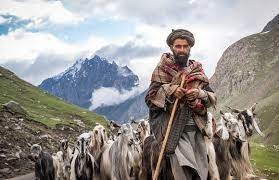
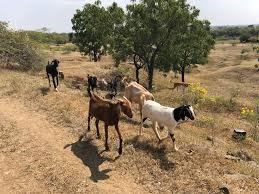
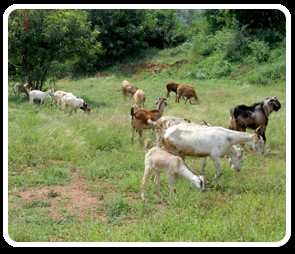
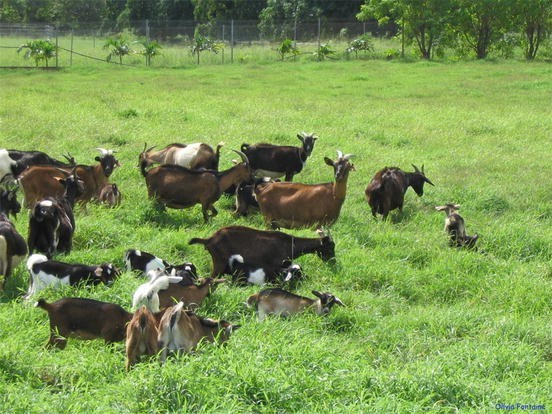 > Grazing the sheep and goat in the entire pasture and leaving them there for the whole season is the extensive system of rearing.
> In this method feed cost is very much reduced. It is not conducive to making the best use of the whole grasses. So we can preferably practice the rotational grazing method.
2. Rotational Grazing Method
> Grazing the sheep and goat in the entire pasture and leaving them there for the whole season is the extensive system of rearing.
> In this method feed cost is very much reduced. It is not conducive to making the best use of the whole grasses. So we can preferably practice the rotational grazing method.
2. Rotational Grazing Method
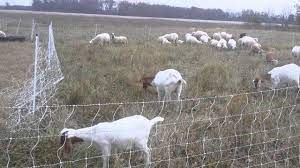
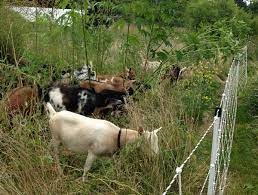 > Rotational grazing should be practiced under which the pasture land should be divided by temporary fences into several sections.
> The animals are then moved from one section to another section. By the time the entire pasture is grazed, the first section will have sufficient grass cover to provide second grazing.
> Parasitic infestations can be controlled to a great extent. Further, it helps to provide quality fodder (immature) for most part of the year. Under this system, it is advisable to graze the lambs first on a section and then bring in ewes to finish up the feed left by the lambs.
3. Semi-Intensive
> Rotational grazing should be practiced under which the pasture land should be divided by temporary fences into several sections.
> The animals are then moved from one section to another section. By the time the entire pasture is grazed, the first section will have sufficient grass cover to provide second grazing.
> Parasitic infestations can be controlled to a great extent. Further, it helps to provide quality fodder (immature) for most part of the year. Under this system, it is advisable to graze the lambs first on a section and then bring in ewes to finish up the feed left by the lambs.
3. Semi-Intensive
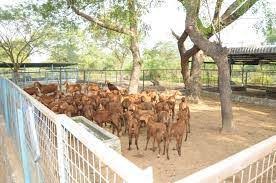
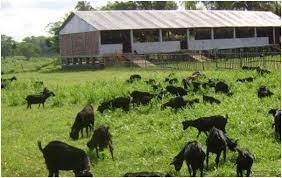 > Semi-intensive system of goat production is an intermediate compromise between extensive and intensive system followed in some flocks having limited grazing.
> It involves extensive management but usually with controlled grazing of fenced pasture. It consists of provision of stall feeding, shelter at night under shed and 3 to 5 hour daily grazing and browsing on pasture and range.
> In this method the feed cost somewhat increased. This system has the advantage of Meeting the nutrient requirement both from grazing and stall feeding.
> Managing medium to large flock of 50 to 350 heads and above. Utilizing cultivated forage during lean period.
> Harvesting good crop of kids both for meat and milk. Making a profitable gain due to less labour input.
4. Intensive System--Zero Grazing System
> Semi-intensive system of goat production is an intermediate compromise between extensive and intensive system followed in some flocks having limited grazing.
> It involves extensive management but usually with controlled grazing of fenced pasture. It consists of provision of stall feeding, shelter at night under shed and 3 to 5 hour daily grazing and browsing on pasture and range.
> In this method the feed cost somewhat increased. This system has the advantage of Meeting the nutrient requirement both from grazing and stall feeding.
> Managing medium to large flock of 50 to 350 heads and above. Utilizing cultivated forage during lean period.
> Harvesting good crop of kids both for meat and milk. Making a profitable gain due to less labour input.
4. Intensive System--Zero Grazing System
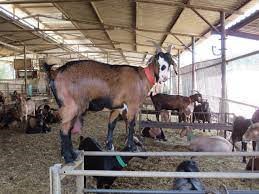
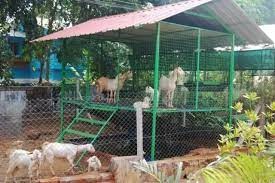 > It is a system in which goats are continuously kept under housing in confinement with limited access to land or otherwise so called zero grazing system of goat production in which they are stall fed.
> It implies a system where goats are not left to fend for themselves with only minimum care. Intensive operation of medium sized herd of 50 to 250 heads or more oriented towards commercial milk production goes well with this system particularly of dairy goats.
> This system of management requires more labour and high cash input. However, this has the advantage of close supervision and control over the animals.
> In this method the dung is collected in one place and used as a good fertilizer. Less space is sufficient for more number of animals.
> Quality goat feed ensures quality meat or milk production. Providing adequate feed according to the demand of your goats help them to grow faster and produce more milk or meat.
> Although goats always keep continue searching for foods. Usually, they can go far from their area for searching food. This type of food habit helps them to meet up the nutritional demands.
> Naturally goats are very hardy and can tolerate weather change highly. They can survive for long time without water in heavy drought.
> During natural disasters and food crisis, they can even consume low quality food. This type of survival with low quality food is not possible for other animals.
> Their mouth are very strong among all the plant eating animals. With their strong mouth, they can eat any types of grasses, different types of leaves, branches of trees etc. Goat converts food to quality meat or milk very fast than other animal.
> Although goat can eat all types of food, but they do not like to eat same food always. So, they should have diversity in their regular feeding habit.
> Goats usually do not eat leftovers of another goat. They can understand the taste of food, but they are not picky. Even they can eat and consume such food which other animals don’t eat. But for commercial production, you must have to very careful about goat feed. Always try to feed your goats quality food with proper nutrition and energy.
Some Tips for Feeding Your Goats:
> Before feeding, determine the health condition of your goats.
> Store the feeds in safe place for keeping the food value intact.
> While storing, never let the feeds being vermin, damp or contaminated.
> Always try to feed your goats in hygienic ways.
> In case of feeding hay, always try to feed high and good quality hay.
> Be sure that, the half of your goat diet is coming from forage.
> Ensure adequate vitamins, green feed ingredients and minerals in goat feed. Because it is the key to be successful in goat farming.
> Never change the food habit of goat suddenly. If needed try to change gradually.
> Ensure colostrum for newly born kids.
> Keep the formulated food far from the goats.
> Always provide your goats sufficient clean and fresh water according to their demands.
> It is a system in which goats are continuously kept under housing in confinement with limited access to land or otherwise so called zero grazing system of goat production in which they are stall fed.
> It implies a system where goats are not left to fend for themselves with only minimum care. Intensive operation of medium sized herd of 50 to 250 heads or more oriented towards commercial milk production goes well with this system particularly of dairy goats.
> This system of management requires more labour and high cash input. However, this has the advantage of close supervision and control over the animals.
> In this method the dung is collected in one place and used as a good fertilizer. Less space is sufficient for more number of animals.
> Quality goat feed ensures quality meat or milk production. Providing adequate feed according to the demand of your goats help them to grow faster and produce more milk or meat.
> Although goats always keep continue searching for foods. Usually, they can go far from their area for searching food. This type of food habit helps them to meet up the nutritional demands.
> Naturally goats are very hardy and can tolerate weather change highly. They can survive for long time without water in heavy drought.
> During natural disasters and food crisis, they can even consume low quality food. This type of survival with low quality food is not possible for other animals.
> Their mouth are very strong among all the plant eating animals. With their strong mouth, they can eat any types of grasses, different types of leaves, branches of trees etc. Goat converts food to quality meat or milk very fast than other animal.
> Although goat can eat all types of food, but they do not like to eat same food always. So, they should have diversity in their regular feeding habit.
> Goats usually do not eat leftovers of another goat. They can understand the taste of food, but they are not picky. Even they can eat and consume such food which other animals don’t eat. But for commercial production, you must have to very careful about goat feed. Always try to feed your goats quality food with proper nutrition and energy.
Some Tips for Feeding Your Goats:
> Before feeding, determine the health condition of your goats.
> Store the feeds in safe place for keeping the food value intact.
> While storing, never let the feeds being vermin, damp or contaminated.
> Always try to feed your goats in hygienic ways.
> In case of feeding hay, always try to feed high and good quality hay.
> Be sure that, the half of your goat diet is coming from forage.
> Ensure adequate vitamins, green feed ingredients and minerals in goat feed. Because it is the key to be successful in goat farming.
> Never change the food habit of goat suddenly. If needed try to change gradually.
> Ensure colostrum for newly born kids.
> Keep the formulated food far from the goats.
> Always provide your goats sufficient clean and fresh water according to their demands.
